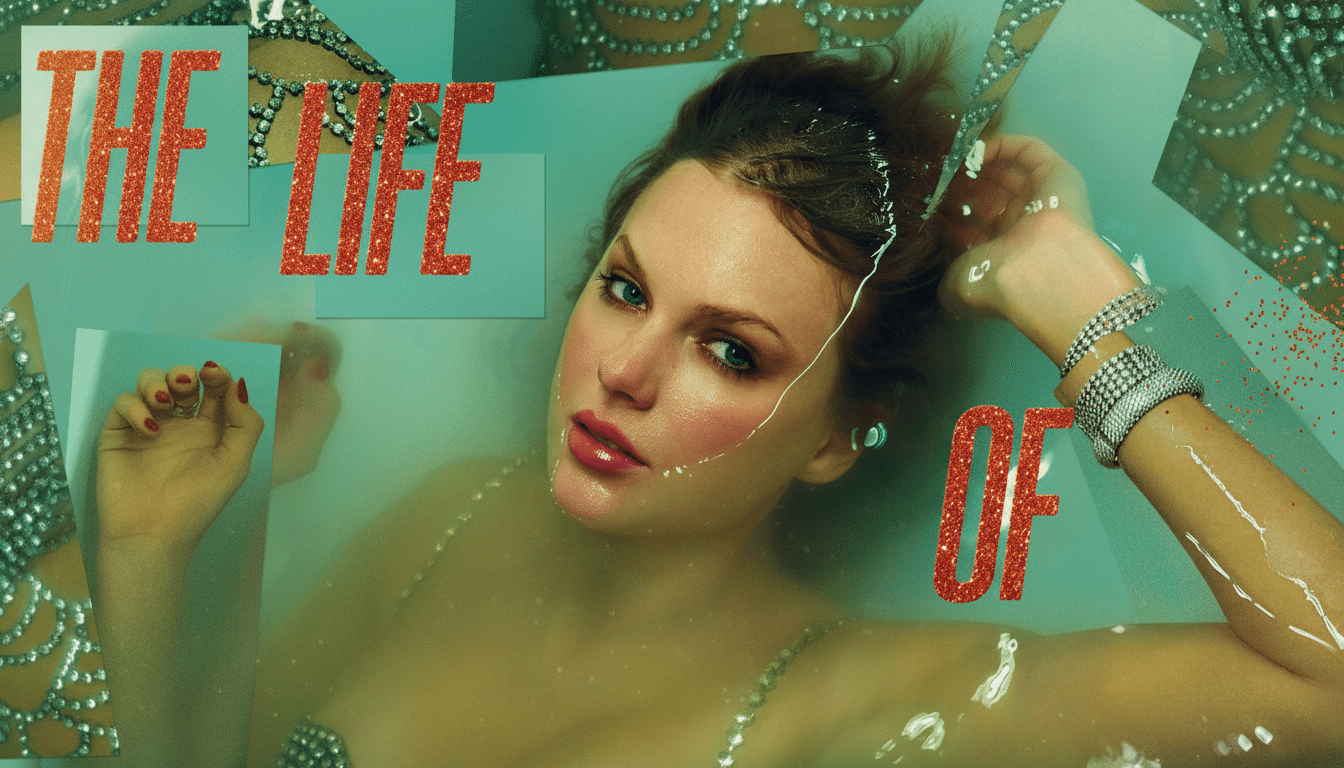Taylor Swift’s 12th studio album, The Life of a Showgirl, has arrived and the reviews are far from unanimous online. Within hours, social feeds were churning with hot takes, stan debates and close-reading threads, and a simple release day had become a referendum on where Swift goes from here — sonically, lyrically and culturally.
The reaction ranges from raves over her ambition to eye-rolls about aesthetic whiplash. The split is jarring because Swift’s recent run of releases has trained listeners to anticipate gymnastic cohesion — here, she leans into spectacle and confessional pop, provoking genre edges without fully exploring them. The result is a discourse factory driven by metrics that quantify just how loud the conversation has gotten.

A Rush Of Mentions And Sentiments Everywhere
Early social listening suggests attention at a massive scale. Users referenced the album more than 1.32 million times on X, according to data from Meltwater; Reddit was next in line as a top hub with about 81,700 mentions. The topline mood is more balanced than the quote-tweets would have you believe: Meltwater monitored a gargantuan volume of neutral chatter — some 975,000 mentions — in addition to 492,000 positive posts and 105,000 negative ones.
That split is consistent with the way Swift releases typically play out online. The neutral posts tend to win in the first wave — track lists, screenshots of lyrics, reaction memes — before sentiment calcifies as critics file their reviews and fans assert themselves with favorites. Count on that neutral sliver being squeezed thin as the ranking threads and think pieces grow apace.
Why Some Reactions Are So Polarized Among Fans
Several flashpoints emerged immediately. “Actually Romantic” is being listened to for shade, parsed by listeners and presented as a Charli XCX diss with the help of stan accounts and algorithmic feeds. Elsewhere, “Father Figure” turned heads for its more explicit language and darker tone than might have been expected from its vintage-showbiz visual.
Another frequent criticism: the lag between what you see and what you hear. The album’s glitzy, old-Hollywood styling indicated a full-on torchy pop record to come. But instead of simply alternating big-chorus pop with diaristic writing, Swift has taken to overlaying glossy hooks onto prickly details. For some, that range translates as versatility; for others, it hits as a conflict between branding and sound.
There’s also a generational subtext. The project’s critics position it as too earnest, too lovesick or too self-aware, a classic pushback against millennial-pop confessionals. Supporters will argue that Swift has always smuggled complex feelings into bright pop packages and that the “showgirl” conceit is a meta device about performance, pressure and public scrutiny.
Celebrity Crossfire And Fandom Dynamics
Celebrity chatter accelerated the cycle. High-profile peers joined in to weigh in — or springboard cryptic emojis off it, which is really all that’s necessary to get the stan sleuthing engines started. Nicki Minaj’s avid participation on X around the release was an accelerant, in part from fans reading into the subtext of a totally unrelated post. Meanwhile, the football-star subplot that enveloped Swift’s personal life became shorthand for detractors who have claimed the lyrics skew simpler; fans resisted this characterization, pointing out some deep cuts that complicate that narrative.

These flare-ups are far from mere noise — they mold discovery. Social algorithms reward friction, bubbling up the controversial threads to casual users who may not have pressed play yet. That feedback loop can further amplify negativity at the feed level, even if aggregate-level analysis indicates neutrality or positivity largely reigns over all.
Marketing, Visuals, And Expectations For The Era
Swift’s rollouts tend to orbit around a visual thesis — snakes for a defiant era, cottagecore for introspection, typewriter ephemera for literary catharsis. Showgirl’s sequins-and-spotlight palette promised razzle-dazzle. The music itself nods to that world without quite living there, and it’s that tension that informs much of the debate. It’s a wager that as much as genre uniformity, the narrative arc — how a performer self-narrates pressure and pleasure — matters.
Industry watchers will be watching how that positioning translates. In previous Swift cycles, she’s proven that concept-heavy eras can own the airwaves and playlists if the singles game plan is exact. Anticipate scrutiny of sequencing, like which songs go to radio or anchor performance clips and which get long-tail life via fan-made edits on short-form video platforms.
What The Early Numbers Could Tell Us About Impact
Streaming velocity will tell the second half of this story. Streaming platforms like Spotify and Apple usually reward high completion rates and repeat listens — songs that inspire lyric discourse frequently climb, as listeners return several times to decipher lines. Chartmetric and Luminate figures in the days to come — playlist adds, skip rates, audience demographics — will add nuance on how polarized talk translates into actual consumption.
It’s also worth remembering Swift’s floor. Her last era broke multiple first-day streaming records, according to Spotify, creating a ceiling few pop acts can get near. If Showgirl does overcome even a modest share of that bar, controversy will have served not as a drag but as an attractor.
For now, the verdict is plain and divided: Swift made an album meant to be argued over. Be it the showbiz gloss, the sharp elbows of the lyrics or the apparent dissonance between them, she has managed to produce something that today’s pop rates above all else: attention with a half-life greater than a single weekend.

